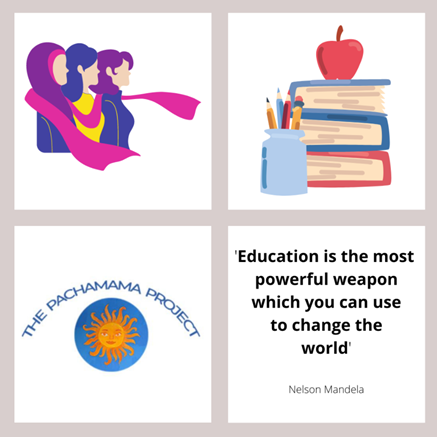Education for Refugee Women
- thepachamamaprojec
- Apr 4, 2021
- 3 min read
Updated: May 3, 2022
Education for Refugee Women
By Hanako Peace 4.03.21

Facts are facts
· Research carried out by UNESCO and UNHCR in 2017 - 2018 show that only 24% of refugees are in secondary school education compared to 84% of people globally.
· Refugee girls often get denied an education in favour of their male siblings and globally for every 10 refugee boys in primary education there are less than 8 refugee girls.
· Girls and women account for upwards of 70% of the internally displaced population.
· A lot of young women and girls are kept out of education for domestic labour, cooking, cleaning, & getting water, etc. This gender-based discrimination prevents them from attending school as they are needed.
Why educate refugee women and girls?
· Education is vita in providing safety, routine, empowerment, and future opportunities for refugee girls whose educational needs are often neglected.
· Education provides a sense of normality for refugee children whose lives have been destroyed by conflict. It is an essential resource needed to stabilise their lives.
· Mothers who have received a secondary education are far more likely to send their daughters to school.
· Further, mothers who have had a secondary education are more likely to send their children to a doctor when they are ill, which results in a reduction of millions in child deaths.
· Educating young girls is proven to reduce the number of child brides and helps to reduce their vulnerability to gender-based abuse and violence.
· Girls and women account for upwards of 70% of the internally displaced population.
What are the obstacles?
· Some refugee children have to travel a long way to school and this journey can make girls increasingly vulnerable to gender-based abuse and violence.
· Schools in host countries and refugee schools need to provide adequate toilets and bathrooms for girls. Social stigmas surrounding menstruation mean that they are more likely to miss days of school and therefore have a less education and be less likely to be enrolled in education at all.
· A challenge among refugee families is the lack of money. School materials can be very expensive and within a big family, parents may not be able to afford to send all the children to school. Usually in this case, boys are favoured as they have a higher chance of having a better paid job in the future.
· The most significant factor which limits the education of refugee girls and women and that informs all the obstacles I have mentioned above is the discrimination of women. Globally, women are treated as subordinate to men and this is especially heightened when resources are scarce and situations are dire. It is time for the education of refugee women and girls to be seen as a priority, and to recognise women’s education and lives as equal to men’s.
Charities and Organisations
· Organisations such as the UNHCR (united Nations High Commissioner for Refugees) run a campaign called ‘Her Turn’ which supports the education of refugee girls globally.
· Supporting charities such as ActionAid which help aid women’s rights in general, add to the support for the education of refugee women as well as advocating for other rights female refugees lack.
· CARE is an organisation which helps fight poverty and injustice to the most vulnerable people in the world and one of their focuses is taking action for refugee women. This includes their March4Women campaign in which 650 members of the British Parliament were contacted by the organisation to raise its concerns about female refugees and to urge them to take action.






Comments